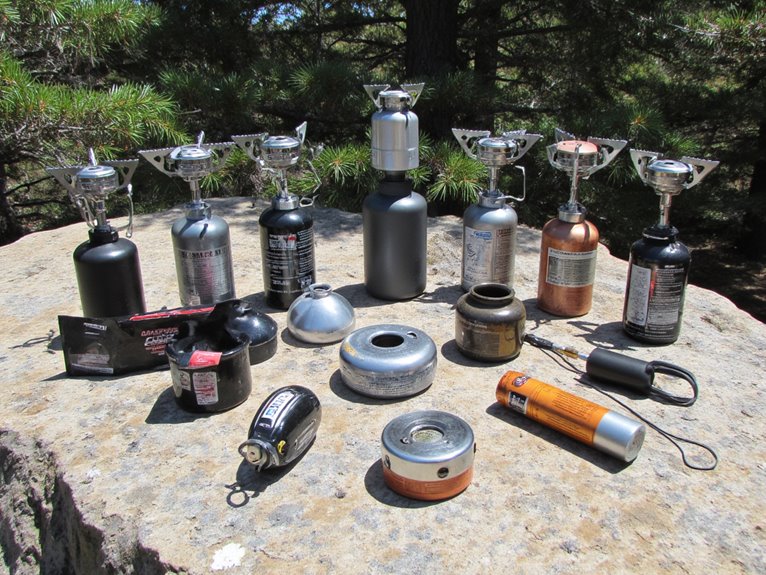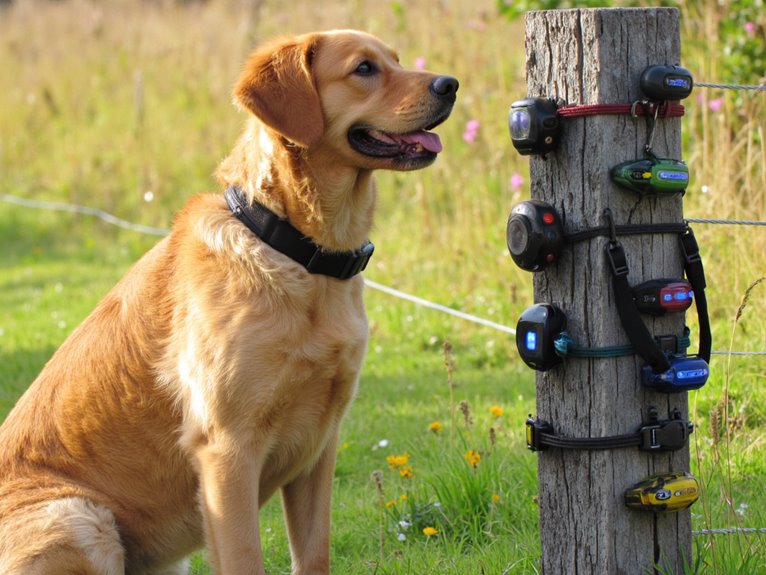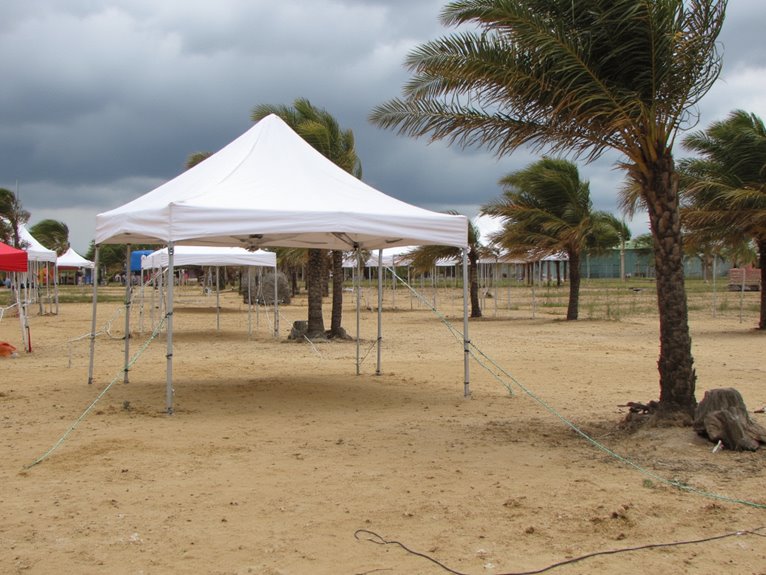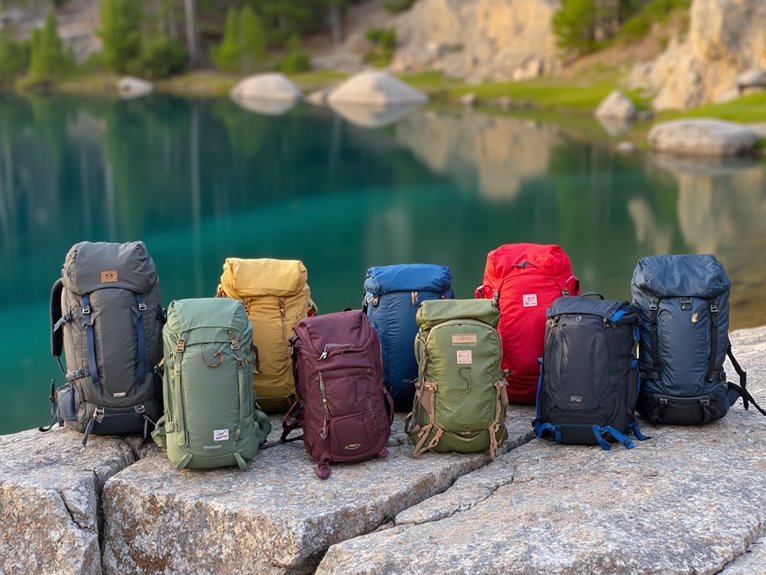Are Double or Single Kayaks Better?
When deciding between a double or single kayak, consider your paddling style, preferences, and goals. Double kayaks offer stability and are ideal for beginners or those who need extra support, but may sacrifice agility and responsiveness. Single kayaks provide greater maneuverability, making them better suited for experienced paddlers who crave speed and precision. Storage, transportation, and budget considerations, as well as social benefits and safety concerns, also play a significant role in determining which type of kayak is best for you. Investigate these factors further to find the perfect fit for your kayaking adventure.
We are supported by our audience. When you purchase through links on our site, we may earn an affiliate commission, at no extra cost for you. Learn more. Last update on 28th December 2025 / Images from Amazon Product Advertising API.
Stability and Maneuverability Compared
When it comes to stability and maneuverability, double kayaks generally offer a more stable ride due to their wider hulls, but this added stability comes at the cost of reduced agility and responsiveness compared to single kayaks.
The increased width of double kayaks provides a more stable platform, making them ideal for beginners or those who prioritize comfort over speed.
However, this stability comes at the expense of maneuverability, as double kayaks tend to be slower to turn and more difficult to handle in tight spaces.
Single kayaks, on the other hand, offer greater agility and responsiveness, making them better suited for experienced paddlers who crave speed and precision.
Ultimately, the choice between a double and single kayak depends on individual priorities and paddling styles.
Space and Storage Considerations
As paddlers weigh the pros and cons of double and single kayaks, the physical space and storage requirements of each type must also be factored into the decision-making process. This is particularly important for those with limited storage capacity at home or at the launch site.
When considering space and storage, keep the following factors in mind:
Length and width: Double kayaks are typically longer and wider than singles, requiring more storage space and potentially limiting transportation options.
Volume and bulk: Singles are generally lighter and more compact, making them easier to store and transport.
Storage accessories: Some kayaks come with built-in storage features, such as compartments or racks, which can impact overall storage needs.
Weight and Portability Factors
Kayakers who prioritize ease of transport and manipulation on land will find that weight and portability factors substantially influence the decision between double and single kayaks.
Generally, single kayaks are lighter and more portable, making them easier to handle solo.
They typically weigh between 40-60 pounds, allowing for effortless loading and unloading from vehicles.
Double kayaks, on the other hand, can weigh up to 100 pounds or more, requiring more effort and potentially additional equipment to transport.
When considering weight and portability, kayakers should assess their personal strength, available storage space, and transportation methods to determine which type of kayak best suits their needs.
Paddling Style and Preferences
Personal paddling style and preferences play a significant role in determining whether a double or single kayak is the better fit, as they can greatly impact the overall kayaking experience.
If you're a beginner or prefer a more relaxed pace, a single kayak might be the better choice. On the other hand, if you're an experienced paddler who enjoys a more intense workout, a double kayak could be the way to go.
- Paddling frequency: If you plan to paddle frequently, a single kayak might be a better fit, allowing you to maintain a consistent pace.
- Stroke style: If you have a more aggressive stroke style, a double kayak could provide the added stability you need.
- Fitness goals: If you're looking to improve your cardiovascular fitness, a double kayak can provide a more intense workout.
Safety and Emergency Situations
When venturing out onto the water, safety and emergency preparedness become paramount, and the choice between a double or single kayak can substantially impact your ability to respond to unexpected situations.
Single kayaks, being lighter and more maneuverable, can be more advantageous in emergency situations that require quick escapes or evasive actions.
On the other hand, double kayaks offer added stability, which can be beneficial in rough waters or when dealing with inexperienced paddlers. Additionally, having two paddlers in a double kayak can provide an extra set of hands to assist in emergency situations.
Ultimately, both options have their strengths and weaknesses, and it's essential to weigh your personal paddling style, experience level, and the type of waters you'll be traversing when deciding between a double or single kayak for safety and emergency preparedness.
Cost and Budget Considerations
Most kayakers operate on a budget, and the cost of a double or single kayak can be a significant factor in the decision-making process, with prices ranging from a few hundred to several thousand dollars.
When considering the cost, it's essential to think about the initial purchase price, as well as ongoing expenses such as maintenance, storage, and transportation.
Initial purchase price: Double kayaks tend to be more expensive than single kayaks, with prices ranging from $800 to $3,000 or more.
Storage and transportation: Larger double kayaks require more space and may require a trailer or larger vehicle for transport, adding to overall costs.
Maintenance and upkeep: Regular maintenance, such as cleaning and repairing, can add to the overall cost of kayak ownership.
Social Benefits and Sharing
When paddling with a partner, the social benefits of kayaking become particularly pronounced, fostering a unique dynamic that amplifies the overall experience.
Sharing the journey with a friend or loved one creates opportunities for meaningful bonding, as you work together to navigate the water and overcome challenges.
Partner Paddling Dynamics
In tandem kayaking, the dynamic between partners can make all the difference in the quality of the paddling experience, as synchronized strokes and effective communication can foster a sense of teamwork and camaraderie.
When partners are in sync, they can cover more distance with less effort, and the experience becomes more enjoyable.
Adaptability: Partners must be able to adjust their strokes to match each other's pace and style.
Communication: Clear and constant dialogue is vital to facilitate partners working together seamlessly.
Trust: Trust is essential, as partners must rely on each other to navigate through challenging waters.
Beyond the tangible benefits of increased efficiency and reduced fatigue, sharing a kayaking experience with a partner fosters a deeper connection and strengthens relationships.
When paddling together, partners develop a sense of trust and reliance on each other, as they work together to navigate the waters.
This shared experience creates a bond that extends beyond the kayaking trip, translating to everyday life.
In addition, sharing the experience allows partners to develop a deeper understanding of each other's strengths, weaknesses, and communication styles, leading to a more harmonious and supportive partnership.
Furthermore, this shared experience can lead to a deeper emotional connection, as partners learn to rely on and support each other.
As a result, kayaking becomes more than just a recreational activity, but a catalyst for building stronger, more meaningful relationships.
Social Bonding Moments
One of the most significant social benefits of sharing a kayaking experience is the creation of memorable social bonding moments that foster a sense of community and togetherness. When you're paddling alongside someone, you're more likely to engage in conversations, share laughter, and create inside jokes. This shared experience strengthens relationships and forges new ones.
Double kayaks facilitate social bonding in several ways:
Shared excitement: You'll both experience the thrill of traversing rapids or spotting wildlife together.
Mutual support: You'll work together to overcome obstacles, building trust and reliance on each other.
Uninterrupted conversations: The peaceful surroundings and rhythmic paddling create an ideal environment for meaningful discussions.





